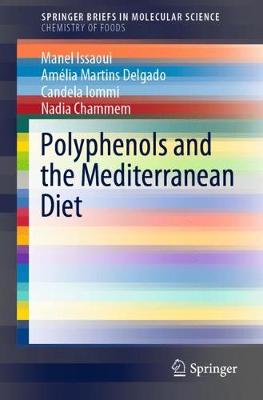Chemistry of Foods
2 total works
Polyphenols and the Mediterranean Diet
by Manel Issaoui, Amelia Martins Delgado, Candela Iommi, and Nadia Chammem
This book focuses on polyphenols in the Mediterranean diet, providing a detailed overview of their chemical structure, extraction and analysis methods, and their role in the diet and in flavor.
Phenols are important not only in terms of preventing a number of diseases due to their antimicrobial and antioxidant effects, but also in shaping our perception of foods. The first chapter discusses consumers’ sensory assessment of foods containing polyphenols in terms of flavor and color, as well as the chemical properties and natural sources of phenolic compounds. The second chapter examines hygiene and safety claims with respect to naturally occurring polyphenols, especially in connection with organoleptic features. The third and final chapter examines the dietary sources of these molecules from various fruits, including processed products such as infusions, wines, oils and olives.
Given its scope, this book is a valuable resource for researchers in academia and industry interested in food safety, hygiene and production issues related to the Mediterranean diet.
This book explores the traditional use of Ilex paraguariensis, a plant that is widely distributed in South America. Thanks to its purported properties, it has been used for centuries in the form of teas with a variety of names, including: ‘yerba mate’ (Argentina), ‘chimarrão’ (Brazil), and others.
Ilex paraguariensis and its teas (also referred to as ‘mate teas’) are well known because of their alleged pharmacological effects in numerous common conditions, including obesity, osteoporosis, constipation, arthritis, and hypertension. These effects are generally ascribed to yerba mate teas because the botanical species contains bioactive and stimulating substances like caffeine (originally dubbed ‘mateine’), various alkaloids, and several phenolic acids. Interestingly, the chemical profiles of these teas can fluctuate over time, creating serious production problems. As a result, it is difficult to reliably determine their safety and health effects on humans.
In response to the global interest in these products, this book offers a reference guide to ‘yerba mate’/‘chimarrão’ teas. It analyzes their chemical profiles, discusses their bioactive features, and addresses their safety and health effects. In addition, since the cultural heritage of yerba mate has greatly contributed to its international success, the book also provides information on its historical legacy, regulatory aspects, and the global market.

